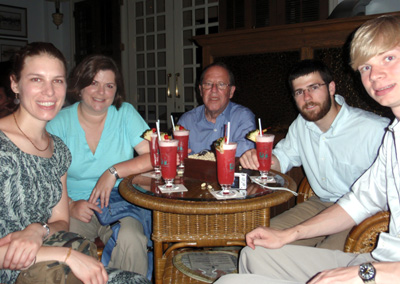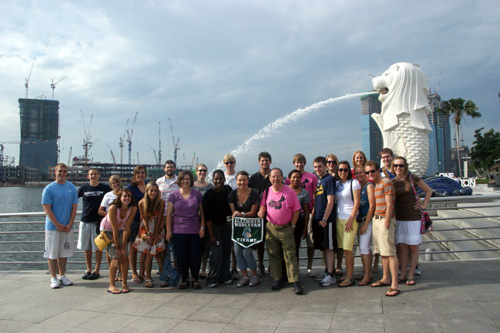In the late 1930s, Singapore was held out as the great hope of the British Empire to stem the advance of Japan, the Gibraltar of the East. Unfortunately for Great Britain, it was instead the scene of the biggest loss in British history, the 80,000 troops surrendering to a Japanese army of around 30,000, albeit with superior naval and air power, on February 15, 1942. That surrender is generally calculated as one of the decisive turning points in Europe’s psychological dominance in Asia, the beginning of the end.
Today, the Lion City also holds symbolic importance—but for different reasons. A city of around 3.5 million citizens, about 75% Chinese, Singapore’s efficiency and wealth have made it an example of bootstraps to riches. Evicted from Malaysia in part because its inclusion would have ensured Malaysia would have a majority Chinese population, the city-state has a higher average income than Great Britain. Much of its progress comes from the PAP (I think it’s the People’s Action Party) which has ruled Singapore (there is an opposition, but it’s small) since the 1960s, when it became independent. Much of its success comes from the vision and determination of Lee Kuan Yew, its senior minister for most of that period. Even today, the hand of central planning plays a big role, as we’ve seen in our business visits—more later on them.
When I taught an Asian Pacific course in the past, one assignment would be to have students write a memorandum to a fictional personnel officer, describing two cities the student would like to be posted in, and why. Invariably, Singapore would be one of the two—and for the reasons that have made it a business and tourist hub—it is clean, efficient, with infrastructure (especially transportation; Changi airport is one of the world’s finest), an educated work force, and an orderliness that makes one wonder if he is really in Asia.
Tourism is vital here, and the natural features (our Cat executive told us wryly that a lot of foreign executives seem to find a reason to come here in December-January, when it’s cold in Peoria), fine dining, and general safety—and better English spoken than in Chicago—make it comfortable. There are 10 million visitors a year here (meaning 3 of 4 people are likely to be from out of town), which makes it possible in part for Singaporeans to enjoy their lifestyle.

- Enjoying the elegance of the colonial period Raffles Hotel, Professors Hoyt and Trimble and several students savor the Singapore Sling, supposedly invented by a bartender at the Long Bar in the hotel.
To supplement the classical attractions of the colonial past (those of us of age visited the Long Bar at the Raffles, one of the great elegant hotels of the 19th—and 21st centuries—to savor the Singapore Sling, supposedly invented there, while being fanned by a pukka-wallah–look it up), the government has done more. We visited a theme park on a former convict island that the government has encouraged foreign investors to develop. We saw a world class light/laser/water show that we ought to find a way to bring to Bloomington, summer housing, casino (a recent addition to the tourist traffic here has been the licensing of casinos—the feeling seems to be if Chinese and others are going to gamble, they might as well do it in Singapore as elsewhere), 6 hotels, including one that has 120 suites with 24/7 butlers, that is by invitation only for high rollers (and, I’m hoping, short Scoutmasters from Normal, Illinois), and a family-oriented fun park. Only 5% of the revenue can come from gambling. On filled-in land, we saw 3 more huge hotels being constructed, with casinos, as the centerpiece for a whole new downtown. As our guide put it, Singaporeans anticipate the next wave, plan ahead, and can do.
The visit to the Caterpillar logistics facility was equally instructive. Largely because of the infrastructure, Cat came to Singapore almost 40 years ago and made it the hub of its Asian logistics operation. We toured the Caterpillar parts area, which stocks 180,000 parts with a $160 million value; since the parts take 38 days to arrive from Seattle, I was able to point our the importance of forecasting, a skill we need to emphasize even more than we do in our business curriculum. The plant is doing well in a company that we read about is having trouble financially; while executives in the Singapore plant have cut their salary in compliance with the directives from Peoria, we were told that the employees are working overtime. Interestingly, 65% of the sales of the facility (Cat also does logistics for other companies, but that’s in another warehouse) go to Indonesia, primarily for gold mining.
The government, as mentioned, plays an important part in the economy, through quasi-government businesses, including Singapore Air (which we’re flying tomorrow), Tomasek, which owns Sentosa Island, the recreational area I mentioned, even down to housing. I’m still having a hard time believing that 84% of Singaporeans live in public housing, but I think that refers to the fact that the government is committed to apartment ownership, and makes possible the building and financing of apartments through low-cost, long-term loans (currently 2%). The government regulates automobiles, too, with a tariff of 110% plus a license to buy that now costs around $8,000, down from $50, 000 several years ago. A certain number of licenses to buy are put up for auction every year. Drivers pay extra to visit the Central Business district during the busy part of the day, and cabs cost more then, too (and after midnight). Public transportation is abundant, efficient and cheap.
Singapore has the reputation of being a “nanny state,” or a “fine” city, where you can get fined for jaywalking, spitting on the street, chewing gum—or any of the other things that make, say, Bangkok or Beijing—or even Chicago—so different.
The Lion City is different in lots of good ways—and that’s no lion.
Talk to you from Saigon in 24 hours or so.


